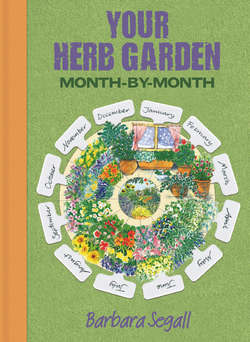Читать книгу Your Herb Garden - Barbara Segall - Страница 77
На сайте Литреса книга снята с продажи.
ANISE HYSSOP
Оглавление(Agastache foeniculum – Labiatae)
Anise hyssop leaves make an excellent herb tea, while the aniseed-flavoured foliage provides an interesting addition to a salad. The plant is attractive to bees.
| type | Hardy herbaceous perennial |
| flowers | From midsummer to early autumn with spikes of mauve-purple flowers |
| leaves | Short-stalked, oval to triangular in shape, light green and anise-scented |
| height | Branched stems grow up to 60–120cm (24–48in) |
| spread | 60cm (24in) |
| planting | Plant out in spring |
| position | Sheltered and sunny site |
| soil | Well drained average |
| care | Spray with fungicide if affected by mildew in hot dry summers. If the plants are badly infected, cut off the foliage leaving the stems 7.5cm (3in) tall |
| propagation | Sow seed in spring under glass. Divide older clumps in spring. Take soft or semi-ripe cuttings from mature plants in summer |
| harvest | Pick the leaves during the growing season. Pick flowers to dry just as they begin to open |
| herbal value | The leaves make an excellent tea and may also be used in salads as a seasoning. Flowers keep their colourwell in dried arrangements |
